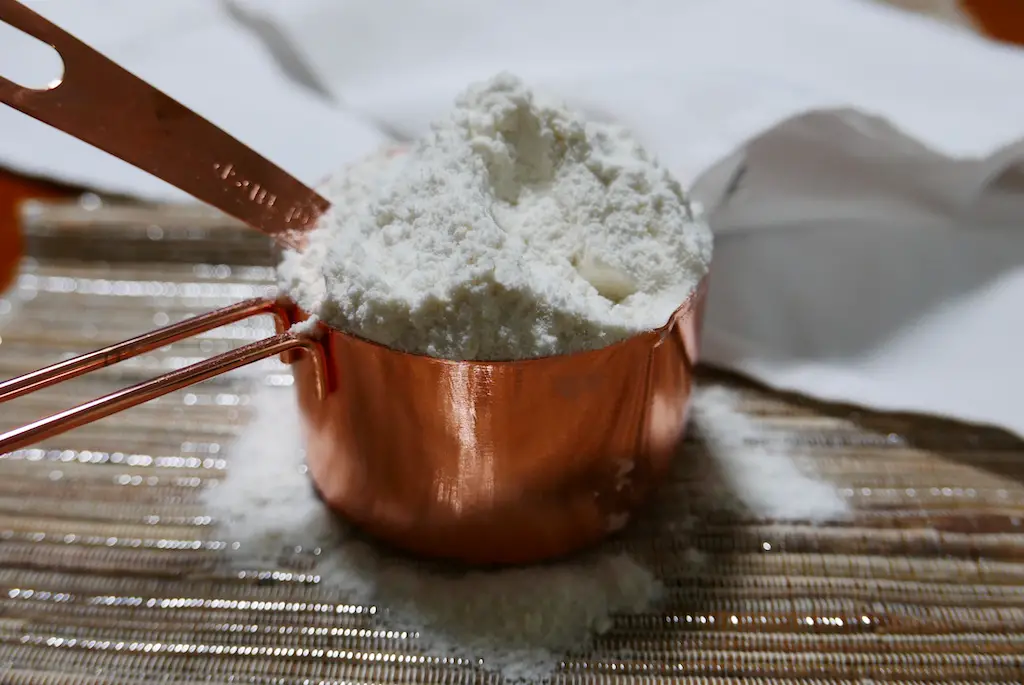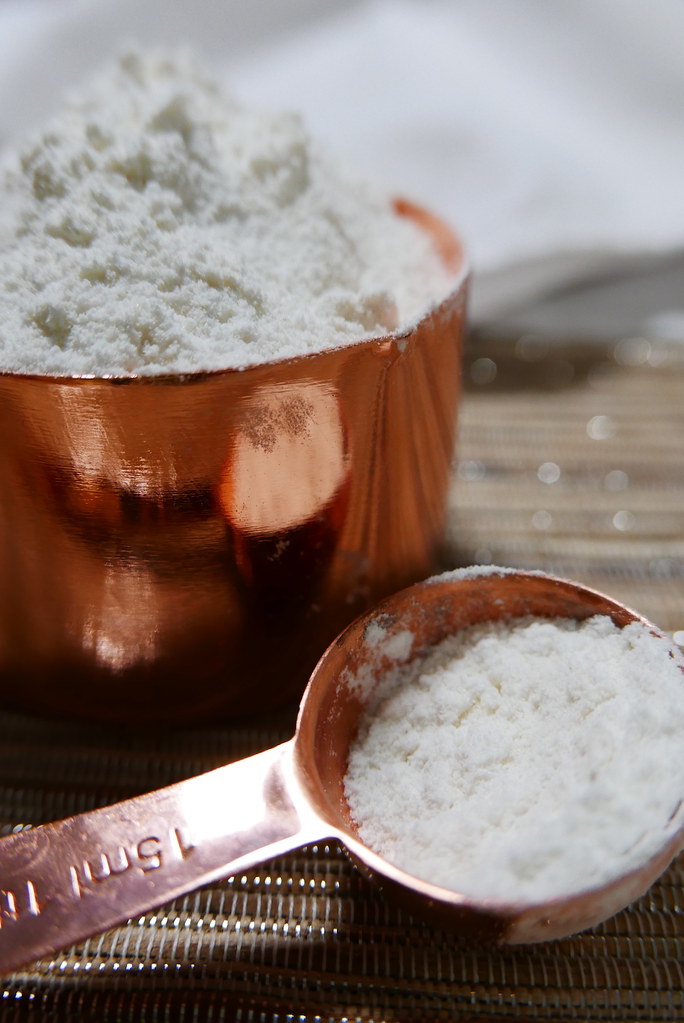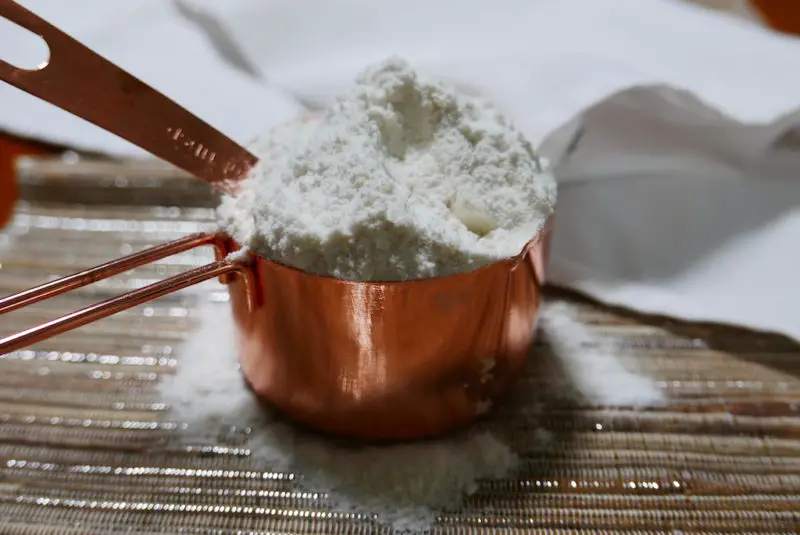When diagnosed with celiac disease, I cried tears of joy and sorrow. Joy because the diagnosis proved I was not crazy; sorrowful funeral tears for my life-long emotional relationship with bread. Since then, I searched high and low FOR YEARS for the perfect wheat-alternative flour blend. Being from the south, all I wanted in life was a biscuit that actually tasted like a biscuit! And, by gosh, I found it impossible to find a flour blend or recipe that could manage this feat (or even come close!) That is, until 2 years ago when my mother gave me the America’s Test Kitchen’s gluten-free cookbooks.
All I can say is, thank you God for America’s Test Kitchen. Without you, I would never have rediscovered that bread and baked goods actually taste good.
America’s Test Kitchen has published two gluten free cookbooks:
The first, titled ‘The How Can It Be Gluten Free Cookbook: Revolutionary Techniques, Groundbreaking Recipes,’ starts with a comparison of what is currently available in the gluten-free market – including, but not limited to, breads, pastas, and all-purpose flours. It then continues on to discuss their tested, tried-and-true, flour blend. Finally, they explain what works (and why), so we, the readers, can effectively prepare and produce cakes, lasagna, pizza, and friend chicken in our own kitchens. I think they also break and reinvent some traditional baking rules along the way!
The Second, titled ‘The How Can It Be Gluten Free Cookbook Volume 2: New Whole-Grain Flour Blend, 75+ Dairy-Free Recipes,’ expands on the former cookbook with a whole-grain flour blend, new recipes using the original flour blend, and recipes using their newly introduced whole-grain blend. True to the test kitchen, the book is filled with helpful tidbits and hints to improve your baking, cooking, and all-around kitchen skills.
Now, I use their flour blend for almost all of my baking, even when making my own recipes. It is important, again, to point out that this flour blend is not my own concoction, nor do I claim it to be so. I am choosing to write about it because I truly believe it is the best blend on the gluten-free market. And yes, I did get my biscuits back because of these books.
I have used this flour blend for many of my own recipes, such as my Lemon Poppy Seed Cake. Also, I used it for one of my best friend’s sorta rustic wedding cake. The recipe was not my own, so I focused on decorating tips instead of the recipe.
I wanted to put this blend on my website because this is what I almost always refer to when baking. You can also find the flour blend on their website. America’s Test Kitchen saved this gluten-free girl from horrible bakes! Cheers to you America’s Test Kitchen!
Once again, this mixture is from America’s Test Kitchen. I do not claim it is one of my own recipes. I recommend buying these books on Amazon or the America’s Test Kitchen website. Carving A Journey is a participant in the Amazon Services LLC Associates Program, an affiliate advertising program designed to provide a means for sites to earn advertising fees by advertising and linking to Amazon.com. Although we may earn commissions for our endorsement, recommendation, testimonial, and/or link to any products or services from this website, these opinions are my own and I fully support these products. On Amazon: The First Book and The Second Book. This is not a sponsored post for America’s Test Kitchen. All of these opinions are my own.
Carving A Journey is a participant in the Amazon Services LLC Associates Program, an affiliate advertising program designed to provide a means for sites to earn advertising fees by advertising and linking to Amazon.com. Although we may earn commissions for our endorsement, recommendation, testimonial, and/or link to any products or services from this website, these opinions are my own and I fully support these products.




8 comments
WOW! So thankful for Test Kitchen. I was diagnosed with wheat sensitivity while I was in my early 20s- now I am entering my 60s. Needless to say I have bought a lot of gluten free products (including trying to make my own flours) with little success- always gritty and heavy. Test Kitchen help me to understand that gluten-free cooking is not just substituting gluten free flours for wheat flour.
So thankful for all the work that went into these recipes. This morning my husband (gluten lover) asked for gluten free pancakes- yes they are that good!
Yes! Test Kitchen has really changed how I cook and eat gluten-free as well! I am so thankful for them. Do you have a favorite recipe?
Hello Emily,
When using ATK’s blend in my own favorite recipes, what is the conversion? Is it cup for cup in volume? If not, do you use their 4 1/2 ounces ATK GF flour blend per every cup of traditional all-purpose flour (which weighs 4 1/4 ounces)?
Hi Elena!For the most part, in the past, I used cup for cup when making a conversion. I found this to be completely acceptable for the most part but recently, as I have gotten more exact with my baking, I have taken to using the ounces method. Once in awhile neither work and you have to find the right balance when converting a recipe (I have an apple cake recipe that requires less gluten-free flour than the original for some darn reason I don’t understand yet. I’m still testing!)
When converting normal baking to gluten-free baking it is all about testing. Sometimes it works, sometimes it doesn’t and is really bad. I have learned that over many, many bakes and as I study the science about how and why bakers use certain tricks.
I am sorry this is not a direct answer! I will say that as an American I found cup for cup fine, but have learned that weight is way more reliable when baking. I recommend going based on weight and adapting/fiddling with your recipe until you find the right balance. Thanks for the question!!!
Hi, Emily! When using ATK’s blend in your own recipes, how do you determine when and how much xanthum gum to use? Thanks, Su
Hi! Generally, when baking the general rule is 1/4 teaspoon of xanthan gum to 1 cup of flour. You can increase slightly when you are baking something that needs more elasticity (pizza dough/cinnamon rolls/ donuts…etc) and decrease if your recipe doesn’t need much structure (cookies). Some of it is just testing out recipes with slightly more or less xanthan gum. Too much with make your recipe have a strange texture, too little will not hold the ingredients together! I hope this helps. I’m sorry that it is not a fully straight answer!
What can I use instead of inflammatory potato starch? For people with autoimmune (Celiac, Fibromyalgia, Leaky Gut…) we do not use “nightshades” like white potatoes. Do you think splitting that amount in half, use half agin of tapioca starch and maybe white rice flour would work? NO Cassava allowed for me either, I know, tapioca comes from same root/plant. Or maybe half amount arrowroot powder? Thank you for any suggestions. There are so many of us AIP & Celiac people!!!
Hi! Thank you for your question! To be honest, as someone with celiac disease, I have never struggled with ‘nightshade’ plants such as potatoes. They never gave me issues since going on a gluten-free diet. It is true that many people with celiac disease can struggle with these different foods though. Unfortunately, because I never struggled with the issue, I am not an expert when dealing with this question. I do not want to give you any wrong information that may de detrimental to your culinary and dietary needs. You have given me a topic to learn and research about though!! So, thank you! I promise to become more education on the subject.
I recommend playing around with corn starch, arrowroot powder, or more rice flour. You may have to alter the exact amounts to get a similar style flour mixture. I hope this helps!